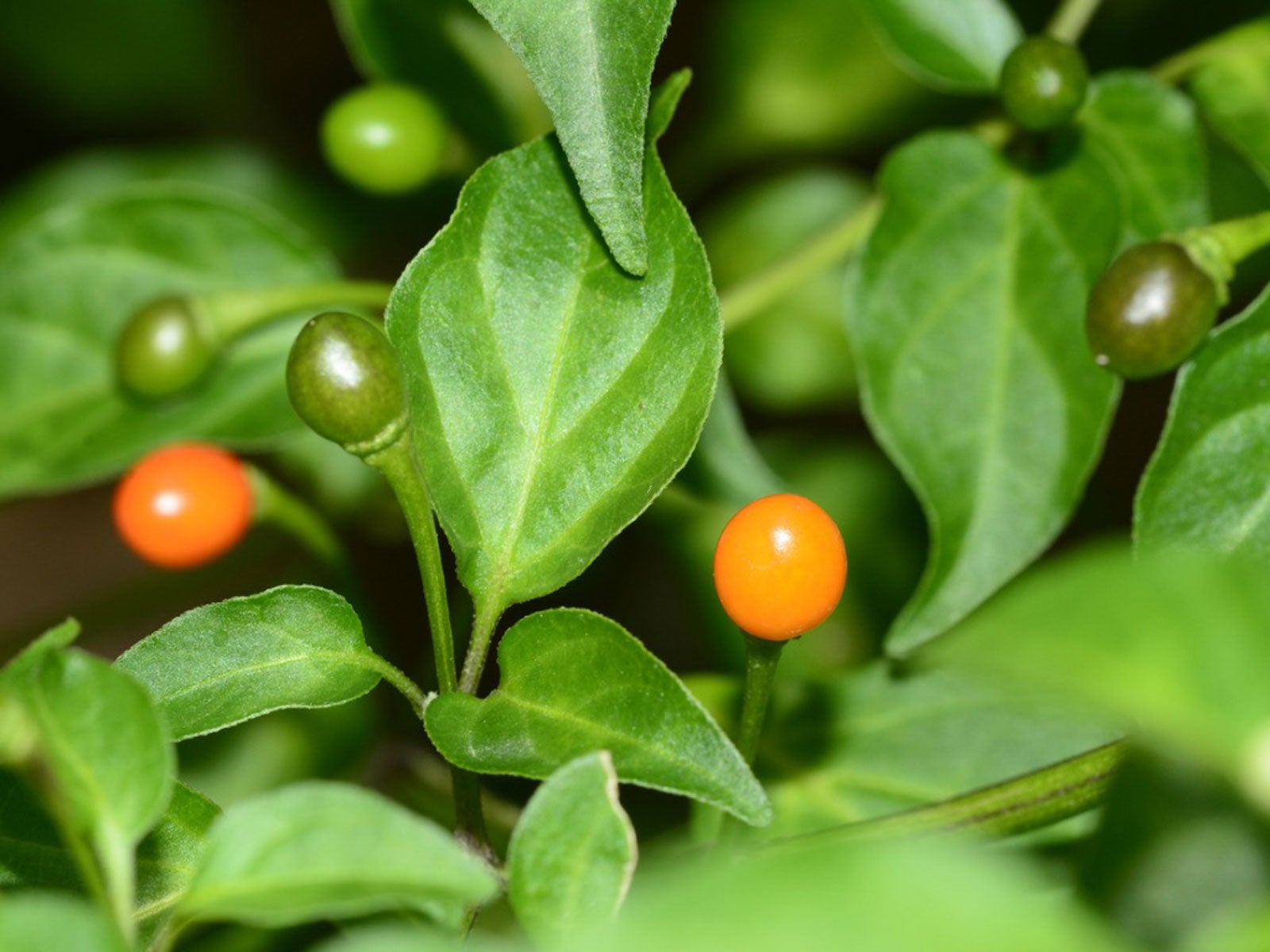Uses For Chiltepin Peppers: How To Grow Chiltepin Chili Peppers

Did you know that chiltepin pepper plants are native to the United States? Actually, chiltepins are the only wild pepper giving them the nickname “mother of all peppers.” Historically, there have been many uses for chiltepin peppers throughout the Southwest and across the border. Interested in growing chiltepins? Read on to learn how to use chiltepin and care for pepper plants.
Information on Chiltepin Pepper Plants
Chiltepin peppers (Capsicum annuum var glabriuculum) can still be found growing wild in southern Arizona and into northern Mexico. The plants bear tiny fruit often referred to as “bird’s eye peppers,” and boy do these little babies pack a punch.
On the Scoville heat index, chiltepin peppers score 50,000-100,000 units. That’s 6-40 times hotter than a jalapeño. While the tiny fruits are indeed hot, the heat is fleeting and combined with a pleasant smokiness.
Growing Chiltepins
Wild peppers are most often found growing under plants like mesquite or hackberry, preferring a shaded area in the low desert. Plants only grow to about a foot (30.5 cm.) in height and mature in 80-95 days.
Plants are propagated via seed that can be difficult to germinate. In the wild, the seeds are eaten by birds that scarify the seeds as they pass through its digestive system, absorbing water along the way.
Mimic this process by scarifying the seeds yourself which will allow them to absorb water more readily. Keep the seeds consistently moist and warm during germination. Have patience, as sometimes it takes up to a month for the seeds to germinate.
Seeds are available at heirloom and native plant seed sellers online.
Gardening tips, videos, info and more delivered right to your inbox!
Sign up for the Gardening Know How newsletter today and receive a free copy of our e-book "How to Grow Delicious Tomatoes".
Care for Chiltepin Pepper Plants
Chiltepin pepper plants are perennials that, provided the roots don’t freeze, will reliably return with summer monsoons. These frost-sensitive plants should be planted against a south-facing wall to protect them and imitate their ideal microclimate.
How to Use Chiltepin Peppers
Chiltepin peppers are most commonly sundried, although they are also used fresh in sauces and salsas. Dried peppers are ground into powder to add to spice mixes.
The chiltepin is also mixed with other spices and pickled, creating a mouthwatering condiment. These peppers have also found their way into cheeses and even into ice cream. Traditionally, the fruit is mixed with either beef or game meat to preserve it.
For centuries, chiltepin peppers have been used medicinally as well, due to the capsaicin they contain.

Amy Grant has been gardening for 30 years and writing for 15. A professional chef and caterer, Amy's area of expertise is culinary gardening.
-
 Looking For Plants To Give You The Soft And Fuzzies? Try These 5 Fuzzy Leaf Plant Options
Looking For Plants To Give You The Soft And Fuzzies? Try These 5 Fuzzy Leaf Plant OptionsLovers of texture, drama, silver foliage and tactile plants will adore these special sensory garden additions. These fuzzy leaf plant options will leave you all aglow
By Susan Albert
-
 Get Ready For A Summer Of Hummers! Grow These Full Sun Hummingbird Plants and Flowers
Get Ready For A Summer Of Hummers! Grow These Full Sun Hummingbird Plants and FlowersIf you’re lucky enough to enjoy a sunny backyard, make sure you are maxing out on your pollinator opportunities and grow these full sun hummingbird plants and flowers
By Tonya Barnett